Cataract Surgery in Canberra
A cataract is the name given to the condition where the natural
lens of the eye is not crystal clear.
What is cataract surgery
A cataract is the name given to the condition where the natural lens of the eye is not crystal clear. Cataract surgery is the procedure of removal of the cloudy natural lens of an eye and replacing it with a plastic artificial lens implant. It is performed by an eye surgeon (ophthalmologist).
Surgery is necessary because cataract can cause blurred vision and other vision problems.
Cataract surgery is also known as lens replacement surgery. The procedure is painless, and in most cases restore good quality of vision.

Symptoms of Cataract
Cataracts are usually not painful. You know you need to see a doctor if your vision is not as clear as it used to be, either for distance focus, near focus, or both. You may also have some of the following symptoms:
1. It is hard to see at night.
2. Sensitivity to light.
3. Seeing a “halo” around bright lights, such as street lights or car headlights.
4. Seeing double vision or ghosting of images.
5. Colors do not seem as lively or vivid as they used to.
When to see an eye doctor?
Make an appointment for an eye exam if you notice any changes in your vision. If you develop sudden vision changes, such as double vision or flashes of light, sudden eye pain, or sudden headache, see your doctor right away.
Causes of Cataract
Most cataracts are related to the normal ageing process.
The lens tissue in human eyes naturally accumulates proteins and hardens with time, leading to a gradual reduction in clarity. Everyone will eventually develop cataract if they live long enough.
Cataract can also be caused by health conditions such as diabetes, previous eye trauma and surgery, as well as medications such as steroids.
Certain inherited genetic disorders can also increase the risk of cataract formation. Cataracts can also be congenital, meaning they are present at birth. Congenital cataract is one of the leading causes of childhood blindness.
Diagnosis
Cataracts are diagnosed through a comprehensive eye examination conducted by an ophthalmologist. The exam may include the following tests:
- Visual Acuity Test: This is a standard eye chart test that measures how well you can see at various distances. It helps determine if your vision is blurred or reduced due to cataracts.
- Slit-Lamp Examination: This test uses a special microscope that illuminates the eye with a strong light, allowing the ophthalmologist to examine the front structures of the eye, including the cornea, iris, and lens, to detect any clouding or abnormalities.
- Dilated Eye Exam: The doctor may dilate your pupils using eye drops to help assess the extent of the cataract, and check for other eye conditions, such as retinal issues.
- Tonometry: Your doctor will usually measure the pressure inside your eye to assess for glaucoma, which can coexist with cataracts.
- Glare and Contrast Sensitivity Tests: These tests measure how your vision is affected by bright lights or glare and how well you can see objects in low contrast situations, which are common issues for people with cataracts.
Early diagnosis of cataracts is important to monitor the progression and determine the right time for surgery if needed.
When to see an eye doctor ?
Make an appointment for an eye exam if you notice any changes in your vision. If you develop sudden vision changes, such as double vision or flashes of light, sudden eye pain, or sudden headache, see your doctor as soon as possible.
Why is Cataract Surgery needed?
Here are some reasons why people need to undergo cataract surgery:
» You have reduced quality of vision or blurred vision affecting daily activities or driving.
» You have difficulty seeing well at night.
» You cannot see clearly even with glasses.
» Colors appearing faded.
» Sensitivity to glare and bright lights.
Types of Cataract Surgery
There are two main types of modern surgery procedures:

1. Phacoemulsification
The most common kind is called phacoemulsification, which involves carefully directing ultrasonic waves to break up the cloudy lens (cataract) into smaller pieces.
The ultrasound is delivered to the eye through a special hand-piece which fits into a self-sealing wound less than 2.5 millimetres wide. The ophthalmologist carefully removes the lens pieces with gentle vacuum.
Following lens removal, the ophthalmologist will insert a specially designed implant, known as an artificial intraocular lens (IOL). The IOL lens will be placed into the support structure where the natural lens used to be suspended at the front of the eye.
2. Femtosecond laser-assisted cataract surgery (FLACS)
In FLACS, a laser machine is used to perform some of the steps of cataract surgery including initial incisions, opening the lens capsule and dividing the lens.
Laser-assisted cataract surgery has not been shown to result in lower complication rates or better visual quality than in traditional phacoemulsification cataract surgery. The effectiveness of the FLACS technique is still being studied and researched, and its full potential has yet to be explored. However, there have been studies that have shown fairly equivalent outcomes.
FLACS may beneficial for advanced, mature cataracts, resulting in lower phacoemulsification energy.

Intraocular lens options
There are a variety of IOL lens options for focusing clearly after the cataract is removed. There are advantages and disadvantages of each type of lens.

Monofocal Lens
The most common type of lens inserted following cataract removal is a monofocal lens. This has a single focus. Monofocal lenses are usually selected for good distance focus, and the patient will then need to wear glasses for reading and near focus.

Toric Lens
Toric lenses provide correction for astigmatism, making vision clearer for those patients who have pre-existing astigmatism.

Extended depth-of-focus lens
Extended depth-of-focus (EDoF) lenses are specially designed to provide good distance and intermediate focus. This is helpful for using the computer, watching TV and seeing the car dashboard, for example.

Multifocal Lenses
These lenses split light to allow focusing at distance, intermediate and near focus. There is a compromise in the quality of vision and contrast that the lens provides. The optics of the lens design, which allows it to provide multiple focuses.
How to prepare for cataract surgery
» Explain the process of surgery, and the lens options.
» Take detailed measurements of your eyes to calculate the lens power.
» Order the appropriate lens for your eye(s).
Patients usually have to fast for a few hours before surgery, as light sedation is usually given. They may also need to stop taking certain medications, such as blood thinners.
It is a very safe and straightforward procedure in most cases, and patients usually go home shortly after. It is important to have someone bring you to the surgery centre or hospital, and take you home.
Here are a few things to know about surgery:
Anaesthesia:
For surgery on your eyes, the anaesthetist will numb the eye with drops, or an injection around the eye. You will also be given medication to help you relax. You’ll stay awake during the procedure, but the eye will be asleep. You may be able to see movement and some light. You will also hear the eye surgeon and the phacoemulsification machine. The procedure will not hurt, but you may feel some pressure while the surgeon is operating.
Positioning:
You will be lying down flat, or at a slight angle, for the cataract surgery.
Removal:
The ophthalmologist uses an operating microscope to perform the surgery. Tiny incisions are made to reach the lens, which is then broken up by ultrasound waves and surgically removed. Finally, the new artificial lens is placed and antibiotic injected to reduce the risk of post-operative infection.
The process of cataract surgery usually takes 10-15 minutes. In some cases, it can take longer. The admission process, anaesthesia and discharge means that you can be in the surgery centre or hospital for 2 or more hours.
The first night:
A pad and shield may be placed over the eye for the first night following surgery.
Eye drops
For about four weeks after the surgery, you will need to use prescription eye drops twice a day. These are anti-inflammatory drops to help the eye heal.
Most people need a few days for vision to improve after surgery. It is common for the eye to be red, gritty and irritated, and watery.

Most people will notice their vision improving after one week. The eye healing process takes about four weeks in most patients.
The days following surgery are crucial for a speedy recovery. Make sure that you follow all instructions given by your ophthalmologist, including:
» Using eye drops when you are instructed to.
» Wearing the plastic shield as instructed.
» Attending follow up appointments
These are things to avoid in the immediate days after cataract surgery:
» Do NOT rub your eye.
» Try not to get tap water or soap in the eye.
» Do not do strenuous activities.
» Avoid using eye makeup for one week.
» Do not drive or fly until your surgeon gives you the all-clear.
» Do not swim for four weeks after surgery.
Cataract surgery is very safe, however there are some risks with any medical procedure.
Blurred vision after cataract surgery
When you have cataract surgery, your eye may be blurry for a few days to a few weeks. It may take longer in some cases.
Most patients will update their glasses about 6 weeks after the cataract surgery is performed.
Cloudiness in the eye after cataract surgery “after-cataract”
Patients may feel a reduction in quality of vision months to years after routine cataract surgery. Some feel that their cataract has come back. Although a cataract cannot recur, a layer of scar tissue can form behind the artificial lens implant This is known as posterior capsule opacification (PCO), or “after-cataract”. PCO is a condition that can be treated very successfully by an office-based procedure known as a YAG laser posterior capsulotomy.
Floaters after cataract surgery
When you see floating shapes or specks of dust that follow your line of vision, it could be floaters in the vitreous. In most cases, floaters don’t require treatments, however they can be a sign of a retinal issue especially if associated with flashes of light.
Eye pain after cataract surgery
If you are experiencing severe eye pain, it may be because you have an infection or complications from the surgery such as high pressure. You should contact your surgeon as soon as possible.
Infection
An infection inside the eye (endophthalmitis) can be a devastating complication after routine cataract surgery. The risk is about 1 in 2000. Endophthalmitis requires urgent treatment with antibiotics and possibly even surgery. Some patients who are unlucky enough to develop endophthalmitis may lose vision completely.
Anaesthesia allergy
Although rare, it is possible to have an allergic reaction to anaesthesia. These reactions are often mild and should resolve quickly.
Do’s and don’ts after cataract surgery – general aftercare measures
» On the day of surgery, it is important not to drive.
» Resting at home for the first couple of nights is best.
» To avoid putting pressure on your eye, we recommend wearing a plastic eye shield throughout the night for one week following the surgery.
» There should be no contact to the eye with any water or other dirt for the first two to three weeks following surgery. During this time, the body can be washed from below the chin down.
» After cataract surgery, you need to instil the prescription eye drops in your eyes as advised.
» Avoid heavy weight lifting or excessive bending after the injury.
» Do not rub or touch the surface of your eye.
Meet the Best Cataract Specialists in Canberra


Dr Parth Shah
MBBS(Hons), BSc(Med)Hons, MMed(Ophth. Sc.), FRANZCO
Specialities- Cataract Surgery, Strabismus surgery & Peadiatric Ophthalmologist
- Dr Parth Shah is a highly skilled ophthalmologist based in Canberra. He is the director and principal ophthalmologist at Clarity Eye Surgeons.
- Having grown up and trained in Sydney, Parth undertook multiple international surgical fellowships at world renowned institutions in the UK and the USA to develop advanced skills in cataract surgery.
- Parth relocated to Canberra in July 2022 in order to address a need for specialised ophthalmology expertise in the ACT, and take the opportunity to build on the highly successful and busy practice developed by Dr David Dickson for over 25 years.
- Parth consults at Clarity Eye Surgeons, and operates at Calvary Hospitals in Bruce, offering both public and private surgery. He also supervises registrars and attends to eye emergencies at Canberra Hospital.
Dr Mariana Sheales
MB BS, MPH, MMed (Ophth. Sc.), FRANZCO
Specialities – Cataract surgery and Glaucoma treatment
- Dr Mariana Sheales is an Australian trained ophthalmologist who offers Cataract Surgery.
- Mariana’s specialist ophthalmology training was completed through the world-renowned Sydney Eye Hospital network. She then completed a super-speciality fellowship in Glaucoma at the prestigious Oxford University Eye Hospital in the UK.
- Mariana has published in several international peer reviewed journals and has presented at local and international conferences. She keeps up to date with recent developments and innovations in the field of ophthalmology by regularly attending conferences and scientific meetings.
- Mariana is passionate about teaching and supervision of trainees, and has already been appointed as a consultant ophthalmologist at the Canberra Hospital. She looks forward to providing regular patient care as well as emergency on-call services.
- Mariana has a highly patient-centred approach and collaborates closely with referring optometrists and doctors.
- Mariana was born and raised in Canberra and knows the region very well. In her spare time, she enjoys cooking and planning her next travel adventures with her husband and children!
Author Bio
Dr Parth Shah is a leading ophthalmologist in Canberra, specialising in cataract surgery. With extensive training and experience, he is renowned for his expertise in the field. Dr Shah is dedicated not only to performing successful surgeries but also to patient education. His compassionate approach, combined with technical proficiency, has earned him the trust and gratitude of countless patients. He is a true advocate for eye health and a trusted name in the Canberra ophthalmology community.
Questions related to cataract Surgery Cost in Canberra
The total cost of surgery depends on a range of factors including where the surgery is performed, who performs the surgery, and what intraocular lens implant is used.
FAQs
Yes, Medicare Australia contributes toward fees associated with cataract surgery. It is a surgical procedure to remove the cloudy crystalline lens of the eye. Medicare cover the cost of cataract surgery done in public hospitals, and will contribute to the cost of surgery and anesthesia fees if the procedure is performed in a private hospital. You may also be eligible for a Medicare rebate for consultation fees related to surgery. However, you may need to pay gap fees for any services that are not covered by Medicare. Speak to your ophthalmologist to find out more about the cost of cataract surgery and any other associated costs.
If you have cataract surgery included under your private health insurance policy, this will allow you to have surgery at a private hospital or surgery centre. There may be an excess on the policy as well as gap payments payable to the surgeon and anesthetist.
The total cost of surgery depends on a range of factors including where the surgery is performed, who performs the surgery, and what intraocular lens implant is used.
Cataract surgery is covered under Medicare for eligible pensioners when the surgery is performed in a public hospital setting. Pensioners may also be eligible for a Medicare rebate for associated consultation fees related to surgery. Speak to your ophthalmologist to find out more about the cost of surgery and any associated fees.
The wait time for cataract surgery in Australia varies depending on the patient’s location and urgency of the procedure. Generally, patients can expect to wait around 6 months or longer for in public hospitals. However, if the cataract is causing significant vision loss or other complications, urgent appointments may be available. Speak to your ophthalmologist to find out more about waiting times.
Private health insurers offer a range of policies covering the cost of cataract surgery, including some that provide cover from the first day of taking out the policy. Speak to your insurer to find out more about the available cover and any associated fees or waiting periods.
Other blogs related to cataract surgery

Can you have cataract surgery in both eyes at the same time?
Can you have cataract surgery in both eyes at the same time? Dr Parth Shah, a highly experienced ophthalmologist and cataract specialist, has performed thousands
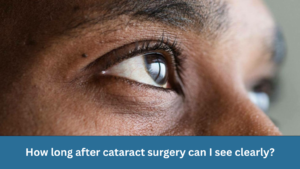
How long after cataract surgery can I see clearly?
How long after cataract surgery can I see clearly? Cataract surgery is one of the safest and most effective eye surgeries performed worldwide. By replacing

Can cataracts grow back after surgery? Myths, facts, and what patients should know
Can cataracts grow back after surgery? Myths, facts, and what patients should know Cataract surgery is one of the safest and most effective procedures performed

Bloodshot eyes after cataract surgery: Causes, recovery, and when to seek help
Bloodshot eyes after cataract surgery: Causes, recovery, and when to seek help Cataract surgery is one of the most effective and commonly performed eye surgeries
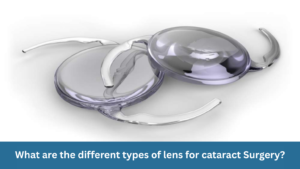
What are the different types of lens for cataract Surgery?
What are the different types of lens for cataract Surgery? Cataract surgery is one of the most common and successful procedures performed worldwide. While removing

What to know about posterior subcapsular cataracts?
What to know about posterior subcapsular cataracts? Cataracts are a leading cause of visual impairment worldwide, particularly among older adults. While age-related cataracts are commonly
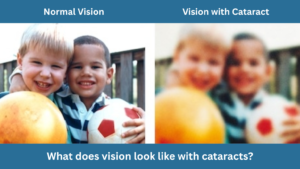
What does vision look like with cataracts?
What does vision look like with cataracts? Cataracts are one of the most common causes of vision impairment worldwide, especially among older adults. Understanding how
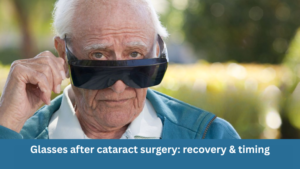
5 Essential Things to Know About Glasses After Cataract Surgery
5 Essential Things to Know About Glasses After Cataract Surgery Cataract surgery is a transformative procedure that restores clear vision by removing the eye’s cloudy

Cortical cataracts: Symptoms, Causes, Treatment, and More
Cortical cataracts: Symptoms, Causes, Treatment, and More Cataracts are a common eye condition that affects millions of people worldwide, especially with age. Among the different

Laser vs Traditional cataract surgery: Which is better?
Laser vs Traditional cataract surgery: Which is better? Cataract surgery is one of the most commonly performed eye procedures worldwide. With advancements in medical technology,

Cataract surgery & Aging: What seniors should know?
Cataract surgery & Aging: What seniors should know? Cataract surgery is one of the most commonly performed surgeries worldwide, particularly for seniors. As we age,

Cataract surgery and Aging: What patients should know
Cataract surgery and Aging: What patients should know Aging brings wisdom and experience, but it can also bring certain health challenges, such as cataracts. Cataracts

The impact of cataract surgery on night vision
The impact of cataract surgery on night vision The impact of cataract surgery on night vision Cataracts are one of the leading causes of vision

Cataract surgery myths debunked
Cataract surgery myths debunked Cataract surgery is a highly effective and routine procedure that helps restore clear vision, yet many people are hesitant due to
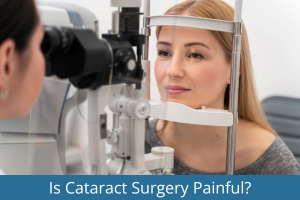
Is Cataract Surgery Painful?
Is Cataract Surgery Painful? Embarking on the journey towards better vision often raises concerns and questions, especially when it comes to surgical interventions. One such

Everything about Cataracts & Surgery: A detailed guide
Everything about Cataracts & Surgery: A detailed guide Cataracts are a common worry, especially as we get older. Imagine your eye’s natural lens gradually getting

Choosing Your Path to Cataract Surgery: Private or Public Practice
Choosing Your Path to Cataract Surgery: Private or Public Practice Introduction Deciding to have cataract surgery is a big deal, and opting to have the

A Comprehensive Guide to Choosing the Right Intraocular Lens (IOL) for Cataract Surgery
A Comprehensive Guide to Choosing the Right Intraocular Lens (IOL) for Cataract Surgery Introduction Cataract surgery is a common and highly effective surgical procedure aimed

Cataract Surgery in Patients with Diabetes: A Comprehensive Guide
Cataract Surgery in Patients with Diabetes: A Comprehensive Guide Cataracts are a common concern for many, but for individuals with diabetes, the journey through cataract

Driving With Cataract and After Cataract Surgery
Driving With Cataract and After Cataract Surgery Driving is a significant part of our lives, offering freedom and independence. But to drive safely, one’s vision

Cataract Surgery in Patients with Glaucoma
Cataract Surgery in Patients with Glaucoma Welcome to Clarity Eye Surgeons, where your eye health is our top priority. In this article, we will explore

The Complete Guide to Cataract Surgery Recovery: Timeline, Tips, and What to Expect
The Complete Guide to Cataract Surgery Recovery: Timeline, Tips, and What to Expect Introduction Cataract surgery is a common and highly effective surgical procedure aimed

How to Choose a Cataract Surgeon: A Comprehensive Guide
How to Choose a Cataract Surgeon: A Comprehensive Guide When it comes to your eye health, selecting the right cataract surgeon is of utmost importance.

Cataract Surgery in Children: Symptoms, Causes, Procedure, Risk and Recovery
Cataract Surgery in Children: Symptoms, Causes, Procedure, Risk and Recovery Introduction Cataract surgery in children is a delicate procedure that can restore a child’s
